Product
Firmness
Score
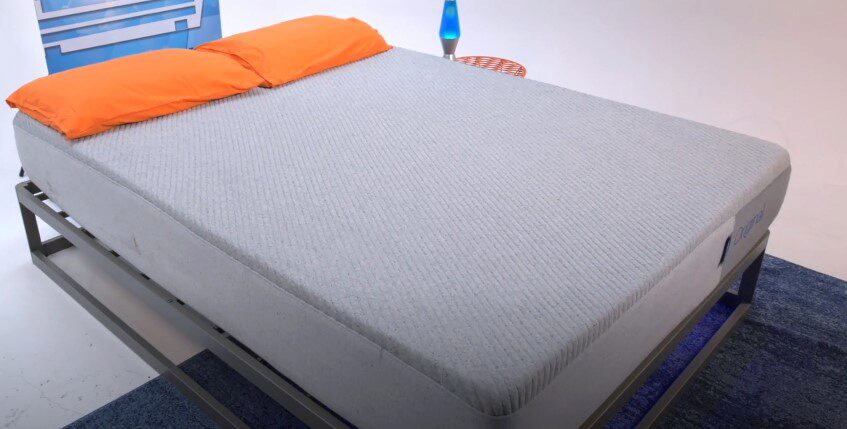
Product
Firmness
Score
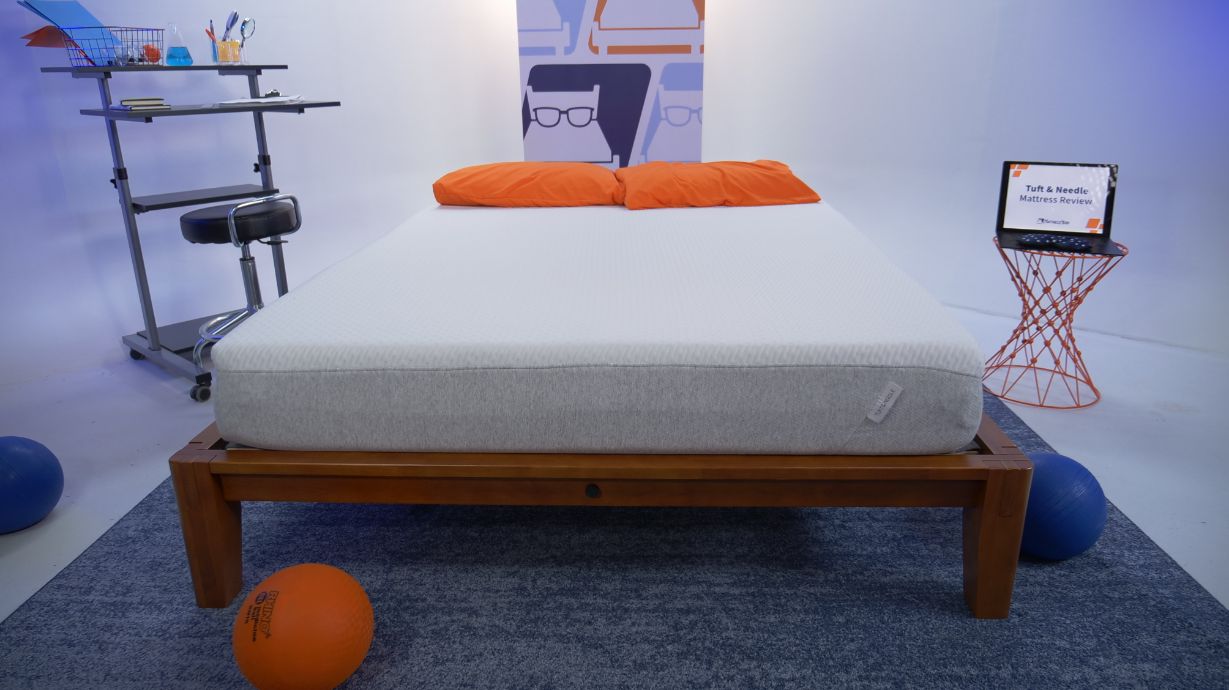
Disclosure: By clicking on the product links in this article, Mattress Nerd may receive a commission fee at no cost to you, the reader. Read full disclosure statement.
On the lookout for a new bed-in-a-box mattress? The Casper and Tuft & Needle are excellent choices! Know more about the materials they’re made of, their size & price comparison, and which sleeping positions suit each bed. Read what others are saying in our testing methodology.


The Casper original mattress is made with breathable AirScape foam, contouring memory foam, and supportive base foam. The Tuft & Needle mattress has a simple two-layer design that includes buoyant T&N Adaptive foam and a sturdy foam support layer.
| Casper is best for… | Tuft & Needle is best for… |
| Combination sleepers | Lightweight or average-weight back sleepers |
| Couples | Lightweight stomach sleepers |
| Back sleepers | Budget shoppers |
Our mattress testers, Loren and Becca go over the similarities, differences, and who should get each between the Casper and the Tuft & Needle.

The Tuft & Needle is slightly firmer than the Casper. Here, we’ll walk you through the specific firmness & feel differences between the two mattresses.
The Casper and Tuft & Needle are both considered medium-firm, however, there are distinct characteristics that differentiate them. Casper’s level of firmness does a great job of providing both pressure relief and support that suits every sleeping position. While the Tuft & Needle, made with T&N Adaptive foam, is a bit more firm and gives a responsiveness that creates a “floating” effect.
The Casper’s comfort layer is an incredibly soft and responsive polyfoam that provides immediate comfort and light contouring that works well for back, stomach, and side sleepers. In contrast, the Tuft & Needle is cushioning and conforming, but it doesn’t have the hug or “sticky” feel of memory foam. With just one comfort layer, you won’t sink very deep into the Tuft & Needle but this top layer is soft enough to cradle the curves of sleepers who weigh less than 230 lbs.
While lightweight and average-weight people are well supported on the Casper Original no matter their sleeping position, heavier folks are not as good of a fit. Similarly, the Tuft & Needle is a good mattress for back sleepers under 230 lbs—lightweight and average-weight people should experience light cradling of the spine without excessive dipping at the hips.
Casper Performance By Body Type & Sleeping Position:
| Body Type: | BACK SLEEPERS | STOMACH SLEEPERS | SIDE SLEEPERS |
| Lightweight (< 130 lbs): | 5 | 4 | 4 |
| Average-weight (130–230 lbs): | 5 | 3 | 5 |
| Heavyweight (> 230 lbs): | 3 | 2 | 2 |
Tuft & Needle Performance By Body Type & Sleeping Position:
| Body Type: | BACK SLEEPERS | STOMACH SLEEPERS | SIDE SLEEPERS |
| Lightweight (< 130 lbs): | 4 | 4 | 2 |
| Average-weight (130–230 lbs): | 4 | 3 | 4 |
| Heavyweight (> 230 lbs): | 3 | 2 | 2 |
The Casper mattress provides excellent comfort for average-weight back sleepers and side sleepers. It keeps the hips and neck in line while also protecting pressure points such as the shoulders, hips, and lower parts of the back. Average-weight side sleepers should experience sufficient pressure relief near their hips and shoulder while laying on the Tuft & Needle. However, it might be too soft for average-weight stomach sleepers.
Heavyweight stomach sleepers and side sleepers might not get the proper spine alignment and comfortable pressure relief they need on the Casper mattress. The Tuft & Needle is also not supportive enough for heavyweight side sleepers. If you’re a heavyweight back sleeper, the Tuft & Needle is not the best fit since you’ll get much better support on a firmer mattress with sturdier materials like innerspring coils. You can find a few of our favorite options by checking out our best mattresses for back sleepers.
Lightweight back sleepers can look forward to the Casper mattress, especially when you’re looking for one that fills in the small of your back. Combination sleepers who move around often throughout the night are a good fit for the Casper mattress. We think the Tuft & Needle is a little too firm for lightweight side sleepers who spend the majority of the night on their sides but lightweight back sleepers should experience light cradling of the spine without excessive dipping at the hips on the Tuft & Needle.
Read on to find out what the Casper and Tuft & Needle mattresses are made of.
| Casper Mattress Materials | Tuft & Needle Mattress Materials |
| Recycled polyester | Polyester fabric |
| AirScape foam | T&N Adaptive foam |
| Zoned Support foam | High-density polyfoam |
| Base foam | |
| 11” | 10” |
Casper’s cover is made from a fabric blend that contains up to 57 recycled bottles. The fabric is soft, stretchy, breathable, and durable. The Tuft & Needle mattress is covered in soft polyester fabric that allows you to sink deeply into the top layer of Adaptive foam.
The Casper mattress is topped with AirScape foam, which is a polyfoam specially formulated to conform to the shape of your body and quickly adapt to changes in your sleeping position. Tuft & Needle’s T&N Adaptive foam is an open-cell foam, meaning there are plenty of air pockets to facilitate airflow.
The base of the Casper consists of a thick layer of dense polyfoam. The final layer of the Tuft & Needle is a durable and dense polyurethane foam that brings a distinct all-foam mattress feel.
| Size | Casper Mattress Prices | Tuft & Needle Mattress Prices |
| Twin | $895.00 | $645.00 |
| Twin XL | $995.00 | $695.00 |
| Full | $1195.00 | $795.00 |
| Queen | $1295.00 | $895.00 |
| King | $1695.00 | $1295.00 |
| California King | $1695.00 | $1295.00 |
For exclusive discounts on both beds see our Casper mattress coupons and Tuft & Needle mattress coupons.
The Casper Original mattress is an all-foam bed that pairs plush polyfoam with Zoned Support memory foam for excellent pressure relief and body alignment. The Casper Original provides comfort for back, stomach, side, and combination sleepers who weigh less than 230 lbs, and its motion isolation makes it good for couples.
The original Tuft & Needle is an all-foam mattress for those who want an entry-level bed with broad appeal. The T&N is budget-friendly and has a medium-firm feel that balances cushioning and support. It’s best for back and side sleepers under 230 lbs.
Casper and Tuft & Needle do their part to give the flagship mattresses better temperature neutrality: Casper perforates the AirScape foam, which creates hundreds of tiny channels for airflow, and Tuft & Needle infuses the Adaptive foam with cooling gel and graphite. With that said, we think the Tuft & Needle sleeps a fraction cooler than the Casper.
In this case, the Casper has better motion isolation, but the Tuft & Needle will still work for couples who don’t move around a lot at night. See the best mattresses for couples for more.
The Casper’s dense foam layers keep you well supported along its edges, but we noticed a little compression near the edges of the Tuft & Needle.
Even though the Tuft & Needle mattress doesn’t provide as much pressure relief, it’s still sufficient for average-weight back sleepers and lightweight stomach sleepers.
The Casper Original is one of the best beds for lightweight and average-weight people with back pain. With a soft comfort layer that cushions the body and a Zoned Support transition layer, the Casper is designed to keep the spine properly supported in every sleeping position. If you have lower back pain, you need a mattress that keeps your hips elevated in line with your shoulders. The Tuft & Needle is firm and supportive enough for back sleepers with back pain under 230 lbs.
All-foam mattresses generally last seven to 10 years, and both the Casper and Tuft & Needle mattresses are protected against defects through 10-year warranties.
Casper customers in the U.S. and Canada get free shipping, while those in Alaska and Hawaii are required to pay an extra shipping fee. Once your mattress is delivered, the Casper 100-night sleep trial starts. After the trial period ends, Casper mattresses are covered by a 10-year warranty that protects against manufacturing defects like indentations, cracks, splits, and broken zippers.
When you purchase a Tuft & Needle mattress, you can have peace of mind knowing that your product will be carefully compressed and vacuum-sealed before being shipped free to your home (that is, if you live within the contiguous U.S.). Tuft & Needle offers a 100-night sleep trial period and also comes with a 10-year limited warranty.
Tuft and Needle’s hybrid mattress is a durable, cooling option that is built to suit a wide range of sleepers. It’s a bed that gives you exactly what you want in a hybrid with the combination of foam, coils, and a pillow top.
We recommend this mattress for the following sleeper types: Financing options are available for this mattress. Tuft and Needle’s hybrid mattress is a durable, cooling option that is built to suit a wide range of sleepers. It’s a bed that gives you exactly what you want in a hybrid with the combination of foam, coils, and a pillow top.
We recommend this mattress for the following sleeper types: Financing options are available for this mattress. Tuft and Needle’s hybrid mattress is a durable, cooling option that is built to suit a wide range of sleepers. It’s a bed that gives you exactly what you want in a hybrid with the combination of foam, coils, and a pillow top.
We recommend this mattress for the following sleeper types: Financing options are available for this mattress.Tuft & Needle Hybrid Mattress

Material
Hybrid
Trial Period
100 nights
Shipping Method
Free shipping minus HI and AK
Firmness
Medium-firm: 6/10
Warranty
10-year limited warranty
Price Range
$$$$$
Hot Sleepers
If you often overheat while you sleep, this mattress should help you stay cool.
Back Sleeping
Ideal for average weight back sleepers.
Stomach Sleeping
Ideal for lightweight stomach sleepers.
Financing Options
Tuft & Needle Hybrid Mattress

Material
Hybrid
Warranty
10-year limited warranty
Firmness
Medium-firm: 6/10
Shipping Method
Free shipping minus HI and AK
Trial Period
100 nights
Price Range
$$$$$
Hot Sleepers
If you often overheat while you sleep, this mattress should help you stay cool.
Back Sleeping
Ideal for average weight back sleepers.
Stomach Sleeping
Ideal for lightweight stomach sleepers.
Financing Options

Tuft & Needle Hybrid Mattress
Material
Hybrid
Firmness
Medium-firm: 6/10
Trial Period
100 nights
Warranty
10-year limited warranty
Shipping Method
Free shipping minus HI and AK
Price Range
$$$$$
Hot Sleepers
If you often overheat while you sleep, this mattress should help you stay cool.
Back Sleeping
Ideal for average weight back sleepers.
Stomach Sleeping
Ideal for lightweight stomach sleepers.
Financing Options
The Mint is an all-foam mattress. It's made with their proprietary Adaptive Foam layers that protect the back and cradle the hips—plus its layers are infused with heat-wicking graphite to maintain a cool sleeping surface.
We recommend this mattress for the following sleeper types: Financing options are available for this mattress. The Mint is an all-foam mattress. It's made with their proprietary Adaptive Foam layers that protect the back and cradle the hips—plus its layers are infused with heat-wicking graphite to maintain a cool sleeping surface.
We recommend this mattress for the following sleeper types: Financing options are available for this mattress. The Mint is an all-foam mattress. It's made with their proprietary Adaptive Foam layers that protect the back and cradle the hips—plus its layers are infused with heat-wicking graphite to maintain a cool sleeping surface.
We recommend this mattress for the following sleeper types: Financing options are available for this mattress.Tuft & Needle Mint Mattress
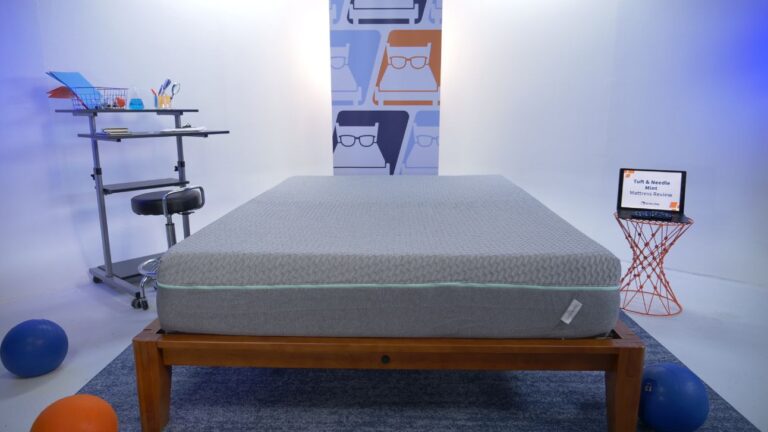
Material
Foam
Trial Period
100 nights
Shipping Method
Free shipping minus HI and AK
Firmness
Medium-firm: 6/10
Warranty
10-year limited warranty
Price Range
$$$$$
Hot Sleepers
If you often overheat while you sleep, this mattress should help you stay cool.
Back Sleeping
Ideal for lightweight and average weight back sleepers.
Side Sleeping
Ideal for average weight side sleepers.
Financing Options
Tuft & Needle Mint Mattress

Material
Foam
Warranty
10-year limited warranty
Firmness
Medium-firm: 6/10
Shipping Method
Free shipping minus HI and AK
Trial Period
100 nights
Price Range
$$$$$
Hot Sleepers
If you often overheat while you sleep, this mattress should help you stay cool.
Back Sleeping
Ideal for lightweight and average weight back sleepers.
Side Sleeping
Ideal for average weight side sleepers.
Financing Options

Tuft & Needle Mint Mattress
Material
Foam
Firmness
Medium-firm: 6/10
Trial Period
100 nights
Warranty
10-year limited warranty
Shipping Method
Free shipping minus HI and AK
Price Range
$$$$$
Hot Sleepers
If you often overheat while you sleep, this mattress should help you stay cool.
Back Sleeping
Ideal for lightweight and average weight back sleepers.
Side Sleeping
Ideal for average weight side sleepers.
Financing Options
Striking the perfect balance between the contour of memory foam and the bounce of pocket-coils, the Casper Hybrid offers the best of both worlds when it comes to superior comfort and support.
We recommend this mattress for the following sleeper types: Financing options are available for this mattress. Striking the perfect balance between the contour of memory foam and the bounce of pocket-coils, the Casper Hybrid offers the best of both worlds when it comes to superior comfort and support.
We recommend this mattress for the following sleeper types: Financing options are available for this mattress. Striking the perfect balance between the contour of memory foam and the bounce of pocket-coils, the Casper Hybrid offers the best of both worlds when it comes to superior comfort and support.
We recommend this mattress for the following sleeper types: Financing options are available for this mattress.Casper Hybrid Mattress
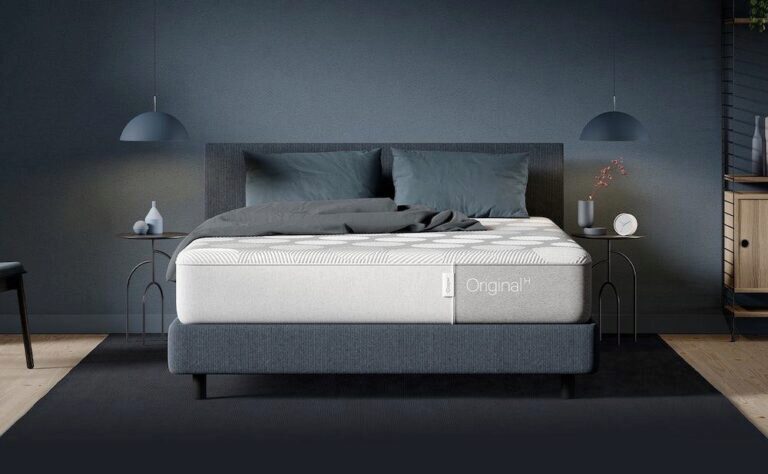
Material
Hybrid
Trial Period
100 nights
Shipping Method
Free shipping
Firmness
Medium-soft: 5.5/10
Warranty
10-year limited warranty
Price Range
$$$$$
Hot Sleepers
If you often overheat while you sleep, this mattress should help you stay cool.
Seniors
This bed is perfect for senior sleepers.
Back Pain
This bed is perfect for anyone suffering from back pain.
Financing Options
Casper Hybrid Mattress

Material
Hybrid
Warranty
10-year limited warranty
Firmness
Medium-soft: 5.5/10
Shipping Method
Free shipping
Trial Period
100 nights
Price Range
$$$$$
Hot Sleepers
If you often overheat while you sleep, this mattress should help you stay cool.
Seniors
This bed is perfect for senior sleepers.
Back Pain
This bed is perfect for anyone suffering from back pain.
Financing Options

Casper Hybrid Mattress
Material
Hybrid
Firmness
Medium-soft: 5.5/10
Trial Period
100 nights
Warranty
10-year limited warranty
Shipping Method
Free shipping
Price Range
$$$$$
Hot Sleepers
If you often overheat while you sleep, this mattress should help you stay cool.
Seniors
This bed is perfect for senior sleepers.
Back Pain
This bed is perfect for anyone suffering from back pain.
Financing Options
The Casper Wave Hybrid strikes a balance with a middle-of-the-road firmness level and features that make it appropriate for sleepers of all shapes and sizes. It’s an excellent choice for those who enjoy the Original Casper’s balance of conforming support but want more bounce.
We recommend this mattress for the following sleeper types: Financing options are available for this mattress. The Casper Wave Hybrid strikes a balance with a middle-of-the-road firmness level and features that make it appropriate for sleepers of all shapes and sizes. It’s an excellent choice for those who enjoy the Original Casper’s balance of conforming support but want more bounce.
We recommend this mattress for the following sleeper types: Financing options are available for this mattress. The Casper Wave Hybrid strikes a balance with a middle-of-the-road firmness level and features that make it appropriate for sleepers of all shapes and sizes. It’s an excellent choice for those who enjoy the Original Casper’s balance of conforming support but want more bounce.
We recommend this mattress for the following sleeper types: Financing options are available for this mattress.Casper Wave Hybrid Mattress
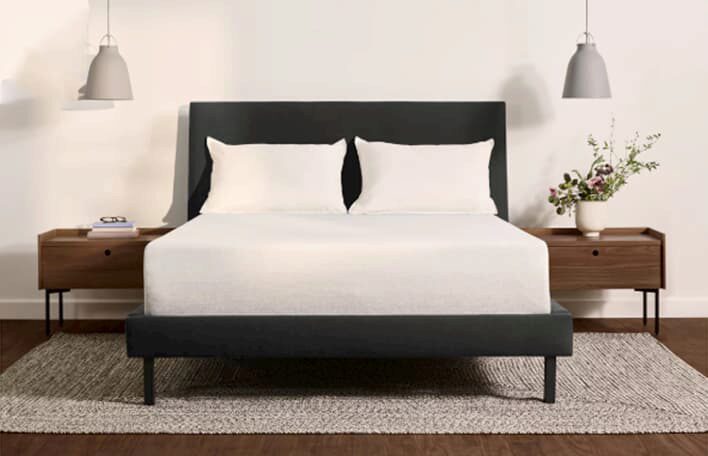
Material
Hybrid
Trial Period
100 nights
Shipping Method
Free shipping
Firmness
Medium-soft: 5/10
Warranty
10-year limited warranty
Price Range
$$$$$
Seniors
This bed is perfect for senior sleepers.
Back Pain
This bed is perfect for anyone suffering from back pain.
Back Sleeping
Ideal for lightweight and average weight back sleepers.
Side Sleeping
Ideal for lightweight, average weight, and heavyweight side sleepers.
Financing Options
Casper Wave Hybrid Mattress

Material
Hybrid
Warranty
10-year limited warranty
Firmness
Medium-soft: 5/10
Shipping Method
Free shipping
Trial Period
100 nights
Price Range
$$$$$
Seniors
This bed is perfect for senior sleepers.
Back Pain
This bed is perfect for anyone suffering from back pain.
Back Sleeping
Ideal for lightweight and average weight back sleepers.
Side Sleeping
Ideal for lightweight, average weight, and heavyweight side sleepers.
Financing Options

Casper Wave Hybrid Mattress
Material
Hybrid
Firmness
Medium-soft: 5/10
Trial Period
100 nights
Warranty
10-year limited warranty
Shipping Method
Free shipping
Price Range
$$$$$
Seniors
This bed is perfect for senior sleepers.
Back Pain
This bed is perfect for anyone suffering from back pain.
Back Sleeping
Ideal for lightweight and average weight back sleepers.
Side Sleeping
Ideal for lightweight, average weight, and heavyweight side sleepers.
Financing Options
Extra plush foam makes this Casper's softest hybrid mattress yet. With seven zones of specialized support, this mattress is not too plush, and your spine should stay aligned all night. The cradling comfort foam combines with two layers of perforated cooling foam that promotes air flow and prevents heat trapping.
We recommend this mattress for the following sleeper types: Financing options are available for this mattress. Extra plush foam makes this Casper's softest hybrid mattress yet. With seven zones of specialized support, this mattress is not too plush, and your spine should stay aligned all night. The cradling comfort foam combines with two layers of perforated cooling foam that promotes air flow and prevents heat trapping.
We recommend this mattress for the following sleeper types: Financing options are available for this mattress. Extra plush foam makes this Casper's softest hybrid mattress yet. With seven zones of specialized support, this mattress is not too plush, and your spine should stay aligned all night. The cradling comfort foam combines with two layers of perforated cooling foam that promotes air flow and prevents heat trapping.
We recommend this mattress for the following sleeper types: Financing options are available for this mattress.Casper Nova Hybrid Mattress
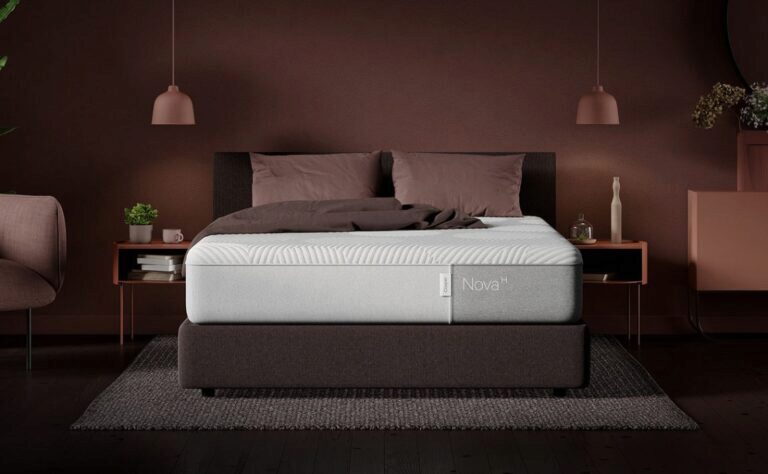
Material
Hybrid
Trial Period
100 nights
Shipping Method
Free shipping
Firmness
Medium-soft: 4/10
Warranty
10-year limited warranty
Price Range
$$$$$
Seniors
This bed is perfect for senior sleepers.
Back Pain
This bed is perfect for anyone suffering from back pain.
Back Sleeping
Ideal for lightweight and average weight back sleepers.
Stomach Sleeping
Ideal for lightweight and average weight stomach sleepers.
Financing Options
Casper Nova Hybrid Mattress

Material
Hybrid
Warranty
10-year limited warranty
Firmness
Medium-soft: 4/10
Shipping Method
Free shipping
Trial Period
100 nights
Price Range
$$$$$
Seniors
This bed is perfect for senior sleepers.
Back Pain
This bed is perfect for anyone suffering from back pain.
Back Sleeping
Ideal for lightweight and average weight back sleepers.
Stomach Sleeping
Ideal for lightweight and average weight stomach sleepers.
Financing Options

Casper Nova Hybrid Mattress
Material
Hybrid
Firmness
Medium-soft: 4/10
Trial Period
100 nights
Warranty
10-year limited warranty
Shipping Method
Free shipping
Price Range
$$$$$
Seniors
This bed is perfect for senior sleepers.
Back Pain
This bed is perfect for anyone suffering from back pain.
Back Sleeping
Ideal for lightweight and average weight back sleepers.
Stomach Sleeping
Ideal for lightweight and average weight stomach sleepers.
Financing Options
The Casper Element is not fancy. It features three memory foam layers, one each designed for comfort, support, and stability. Casper says all three are also breathable and able to release heat.
We recommend this mattress for the following sleeper types: Financing options are available for this mattress. The Casper Element is not fancy. It features three memory foam layers, one each designed for comfort, support, and stability. Casper says all three are also breathable and able to release heat.
We recommend this mattress for the following sleeper types: Financing options are available for this mattress. The Casper Element is not fancy. It features three memory foam layers, one each designed for comfort, support, and stability. Casper says all three are also breathable and able to release heat.
We recommend this mattress for the following sleeper types: Financing options are available for this mattress.Casper Element Mattress
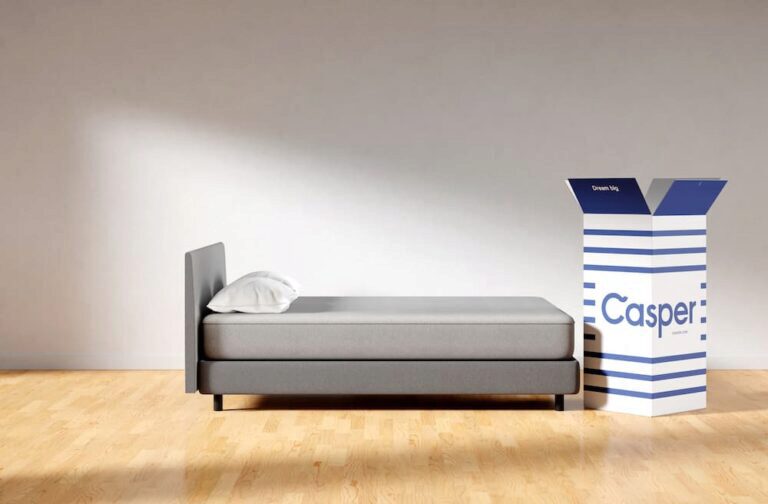
Material
Foam
Trial Period
100 nights
Shipping Method
Free shipping
Firmness
Medium-firm: 6/10
Warranty
10-year limited warranty
Price Range
$$$$$
Seniors
This bed is perfect for senior sleepers.
Back Sleeping
Ideal for lightweight back sleepers.
Side Sleeping
Ideal for lightweight and average weight side sleepers.
Financing Options
Casper Element Mattress

Material
Foam
Warranty
10-year limited warranty
Firmness
Medium-firm: 6/10
Shipping Method
Free shipping
Trial Period
100 nights
Price Range
$$$$$
Seniors
This bed is perfect for senior sleepers.
Back Sleeping
Ideal for lightweight back sleepers.
Side Sleeping
Ideal for lightweight and average weight side sleepers.
Financing Options

Casper Element Mattress
Material
Foam
Firmness
Medium-firm: 6/10
Trial Period
100 nights
Warranty
10-year limited warranty
Shipping Method
Free shipping
Price Range
$$$$$
Seniors
This bed is perfect for senior sleepers.
Back Sleeping
Ideal for lightweight back sleepers.
Side Sleeping
Ideal for lightweight and average weight side sleepers.
Financing Options
The Casper and Tuft & Needle original mattresses have similar builds, but actually feel quite different. Casper’s responsive, motion isolating top layer is best for combination sleepers and couples. The softer foam near the head of the mattress makes it a better choice for side sleepers. If you’re a lightweight back or stomach sleeper, then the Tuft & Needle may be your best bet. The T&N mattress is also a better option for budget shoppers.
The Tuft & Needle original mattress isn’t the most durable mattress on the market. We estimate it will last you around six years before the top layer begins to soften or form permanent body impressions. However, this softening may actually be to the benefit of side sleepers.
Casper mattresses are unlikely to sag in the first seven to ten years of ownership so long as they are set atop a supportive base. Casper covers body indentations of greater than 1 inch during the 10-year warranty, so you’re covered in the case of a deep impression.
Casper is one of the most popular bed-in-a-box mattress brands with primarily positive customer reviews since they opened in 2014. They carry a wide selection of high-quality foam and hybrid models to fit the needs of diverse customers, and they back every mattress with a risk-free sleep trial.